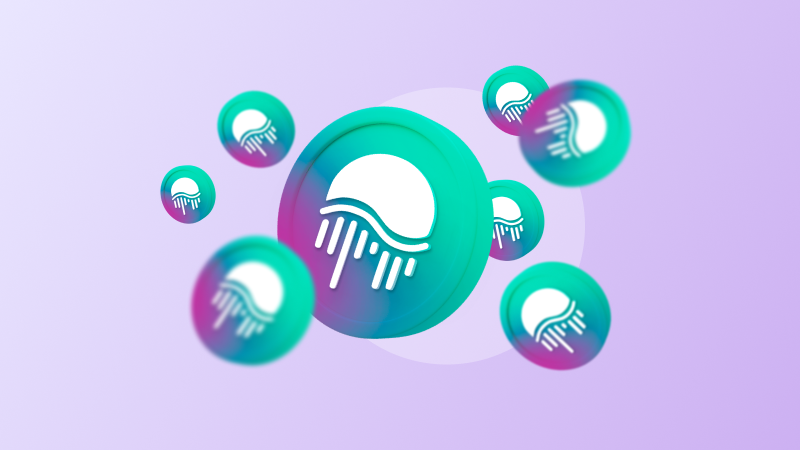The developers of Polkadot were the first to introduce the concept of canary networks and launched the Kusama project. You might wonder, “Why canaries?”. The answer lies in historical facts. Previously, miners took canaries to the mine to detect dangerous gases. People hurriedly left the mine if the bird suddenly began to show signs of anxiety. Now the developers of Polkadot use the Kusama canary network for testing and troubleshooting. At the same time, the Polkadot parachain Moonbeam also uses its own canary network — Moonriver.
What Is Moonriver?
Moonriver is a public pre-production environment for Moonbeam, which allows any developer to experiment and test the latest Moonbeam buildings before launching projects on the main network. While Kusama is a test network for Polkadot, Moonriver is such for Moonbeam. Therefore, the Moonriver lives on Kusama, and the Moonbeam lives in the main Polkadot network. The platform works as a “sandbox” for developers where they can test and verify the set of tools offered by Moonbeam. Developers use the platform to test their apps before deploying them to Moonriver. The canary network has full functionality and allows developers to test their projects under real economic conditions. The Moonriver project was launched in June 2021, half a year earlier than Moonbeam. Thanks to this, developers got early access to the canary network and were able to start building, experimenting, testing, and launching decentralized applications. At the moment, Moonriver is used not only as a test network for Moonbeam but also as a full-fledged, independent network on Kusama that hosts its own projects.
How Does Moonriver Work?
Moonriver is a twin of Moonbeam on the Kusama canary network. Moonbeam is a project that provides developers with an environment for building decentralized applications using Ethereum tools, such as the Solidity programming language, deployment tools: Truffle, Remix, and much more. Like Moonbeam, Moonriver is an EVM-compatible chain that allows decentralized application developers to use Ethereum tools to build Ethereum-like protocols and applications. The Moonriver project provides developers familiar with the Solidity programming language with the opportunity to test their code in a test environment. And after successful testing and verification of the code in Moonriver, the same code is transmitted to Moonbeam on Polkadot.
Developers with decentralized applications on the Ethereum network can easily replicate their projects, transfer them to Moonriver, test and verify, and then launch them in Moonbeam. Moreover, Moonriver goes far beyond traditional compatibility. The project allows users to interact with the protocol via the existing Ethereum accounts, signatures, and addresses. By transferring their projects to Moonriver, developers benefit from low gas fees, scalability, and additional features offered by the project. In addition, the further transfer of projects to Moonbeam provides developers with cross-chain access to all chains in the Polkadot ecosystem.
There is no need to make any changes to existing contracts to transfer them to the Moonriver network. Thus, the key features of Moonriver are:
- Full mirroring of Ethereum, including the ability to use existing accounts, ECDSA signatures, keys, logs, and more.
- Support Ethereum tools such as MetaMask, Truffle, Remix, Waffle, Hardhat, and others.
- Support for any programming languages that support Ethereum bytecode, such as Solidity, Vyper, and others.
However, Moonriver also has some differences from Ethereum. Firstly, the Moonriver parachain uses a Delegated Proof of Stake consensus mechanism, unlike Ethereum, which still uses Proof of Work. In the Delegated Proof of Stake, users can delegate their tokens to collater candidates responsible for network security and block production. For this, users receive part of the rewards received by the validator.
In addition, like Moonbeam, Moonriver is a community-driven project, thanks to which token holders can participate in decision-making processes, that is, vote, make proposals, and so on.
MOVR Token
$MOVR is a Moonriver utility token with a similar economic model to the Moonbeam GLMR utility token. The MOVR token was issued with a total supply of 10 million units, most of which were reserved. At the time of writing, there are about 4.8 million MOVR in circulation. Like GLMR, MOVR has a built-in burning mechanism, resulting in 80% of transaction fees being burned and 20% being sent to the treasury. However, the GLMR and MOVR tokens have different distribution models. For example, in the case of MOVR, 40% of the tokens are reserved to maintain the lease of the Kusama parachain slot and reward community members.
The MOVR token has the following use cases in Moonriver:
- Payment of gas fees for the execution of smart contracts.
- Use within on-chain governance.
- Payment of transaction fees.
- Payment of staking rewards.
Conclusion
The Moonriver is a canary network for Moonbeam, similar to the Kusama for the Polkadot. The network interests developers of decentralized applications who want to test their projects and move them to a more scalable and cost-effective environment and get access to the growing Polkadot ecosystem. The main advantage of Moonriver is that the network is entirely independent, which is why many developers prefer to stay on Moonriver instead of switching to Moonbeam.
